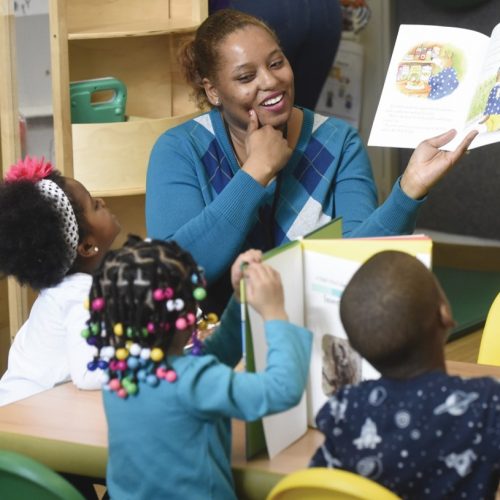When it comes to strengthening our education system and ensuring success for all students, the latest research repeatedly points to the critical role of early education. But how early is early enough? And what constitutes quality? This recent article from the Brookings Institution (“Brain matter matters: Should we intervene well before preschool?”) celebrates advancements in preschool access, but suggests that additional investments must reach children between 0 and 3 years old and even before birth (i.e., prenatal care). The years before preschool are essential.
“Preschool might narrow the gap between the low-income children and their more advantaged peers. And while it is critically important, it cannot close the gap. If baby brains are already showing signs of poverty from birth, our policies and programs must address this fact. Brain matter matters. Smaller brains portend more cognitive risk. But there is something we can do about it.”
— Brookings Institution
To shape brighter futures, interventions must begin earlier and must be high-quality. Prenatally and in these critical first few years of life, a baby’s brain experiences a tremendous amount of development. (Sara Roseberry Lytle, PhD, from the Institute for Learning & Brain Sciences shared her expertise with the Birth-to-Three Policy Alliance at a meeting last year.) But when lacking exposure to language- and resource-rich environments intentionally designed to stimulate growth, children can fall behind their peers and endure an endless struggle to catch up.
“In the U.S. alone, cities and states (e.g., Boston, Tulsa, New Jersey and Tennessee) have rolled out extensive ‘universal’ preschool initiatives such that today, 75 percent of the nation’s 4-year-olds, and 65 percent of those 4-year-olds living in poverty, have access to at least some preschool education. The emphasis has turned to whether the deliverables can move beyond access to child care to access to high-quality child care.”
— Brookings Institution
This article echoes the Bainum Family Foundation’s belief that the solution cannot be found in one program or one intervention alone. To thrive, children and their families need a comprehensive, integrated set of supports that strengthen and bridge the gaps between early learning and wrap-around supports — enhancing home and classroom environments alike. And for maximum impact, these supports must reach children in their first 1,000 days of life.
Learn more about our strategy to improve early childhood:





